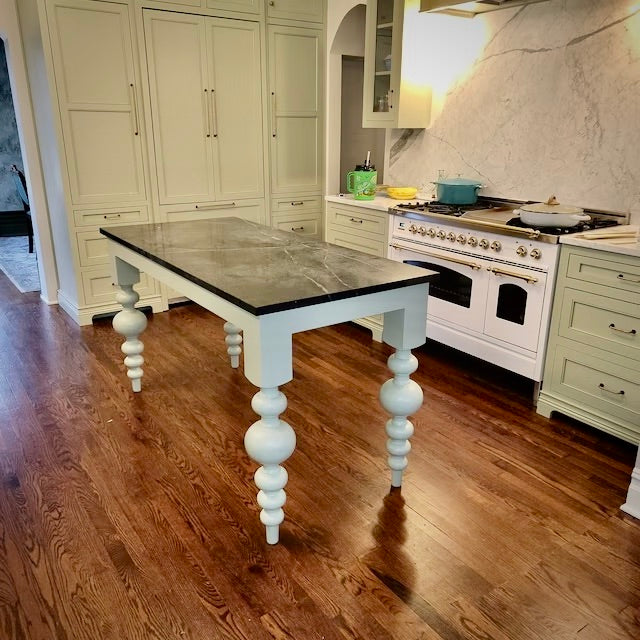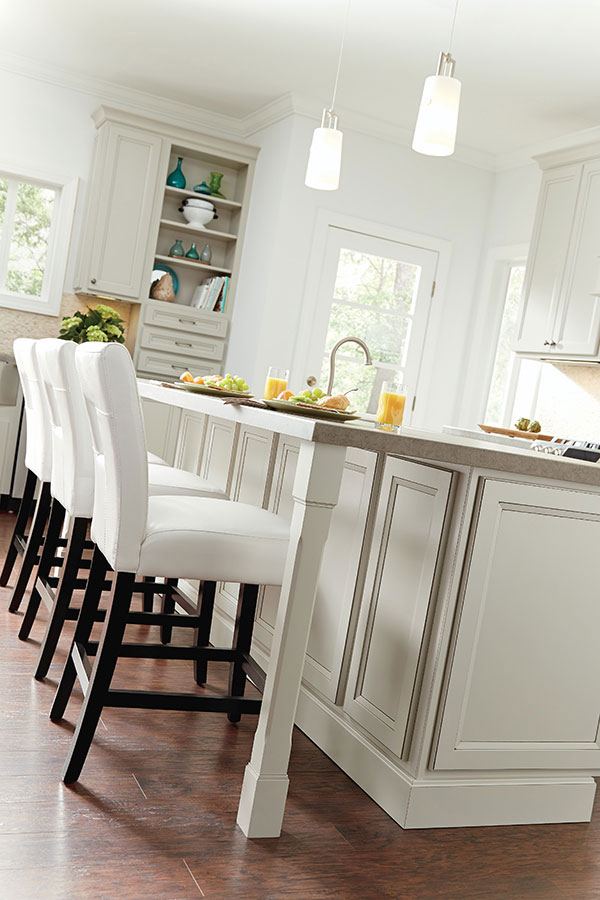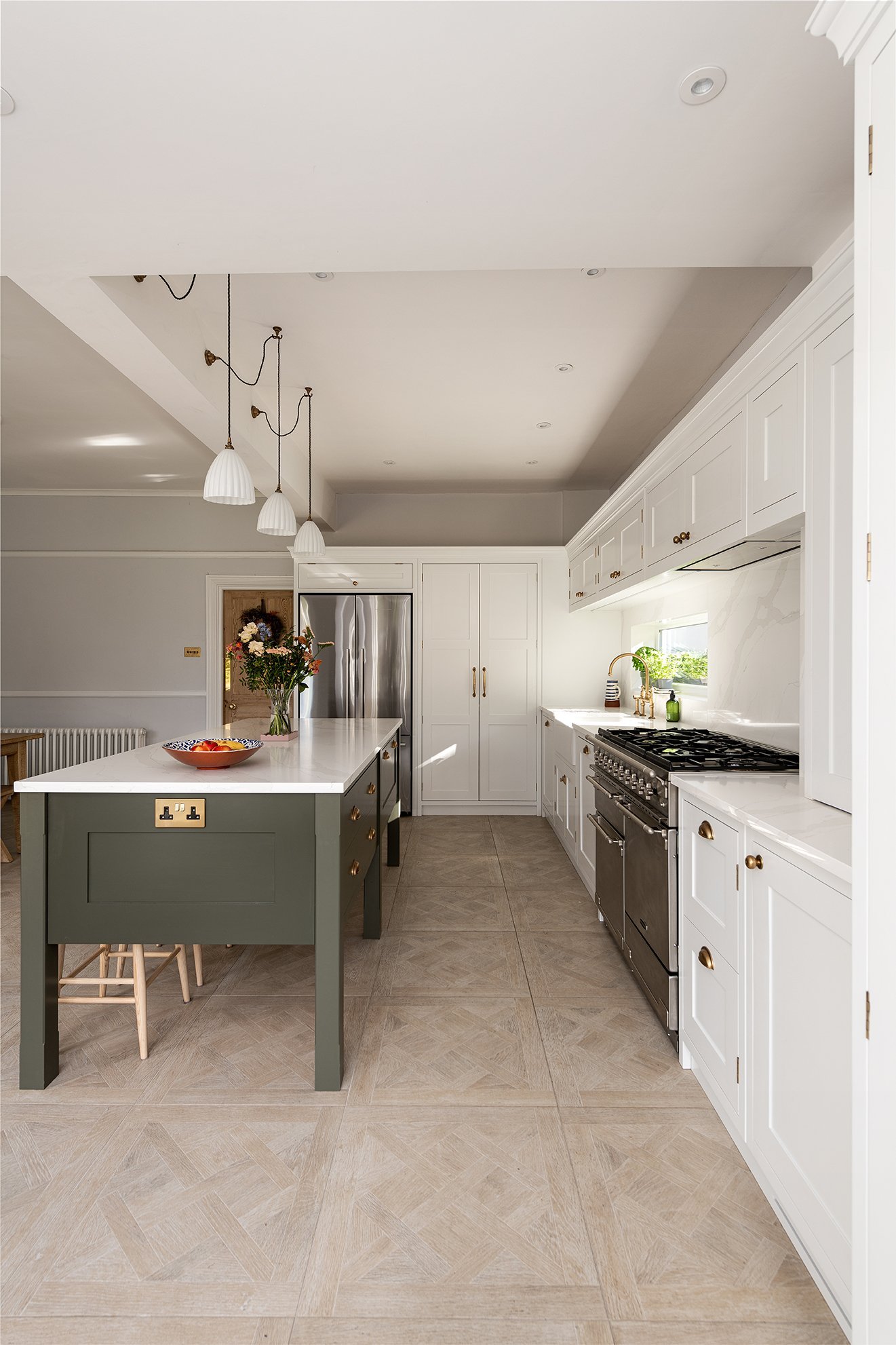Special Kitchen Island Legs for a Personalized Kitchen Look
Special Kitchen Island Legs for a Personalized Kitchen Look
Blog Article
Crucial Tips for Choosing the Perfect Table for Your Kitchen Area
Selecting the best dining table for your kitchen area is greater than just an issue of taste; it requires an extensive understanding of your space and needs. Begin by determining your offered space to make sure enough clearance for activity. The form of the table plays an essential duty; while rectangle-shaped tables match larger locations, rounded ones foster intimacy, and extendable options supply versatility. Material choice is just as important, with hardwoods offering sturdiness and glass financing a contemporary touch. The table needs to harmonize with your kitchen's aesthetics and fit your household conveniently. What various other elements might affect this crucial choice?
Step Your Room
Selecting the suitable table starts with a careful assessment of your available space. This foundational action makes sure that the table not just fits pleasantly within the room yet likewise enhances the total design and performance of your eating location. Begin by determining the measurements of the space, thinking about entrances, windows, and any existing furniture. This will certainly help you identify the maximum allowed dimension for your table.
It is essential to leave adequate space for chairs to be drawn out and for people to move around the table without obstruction. A general policy of thumb is to enable at least 36 inches of clearance from the edge of the table to the nearest wall surface or item of furnishings.
Furthermore, believe concerning the number of people you typically amuse and whether you require additional area for visitors. Choosing an extendable table can offer flexibility, enabling you to fit differing varieties of diners. By properly determining your room, you lay the groundwork for picking an eating table that improves both the looks and performance of your eating area.
Select the Right Forming

On the various other hand, round tables are outstanding for smaller cooking areas or intimate gatherings, as they promote conversation by enabling everybody to face each various other. They likewise provide a feeling of coziness and can fit well in tighter areas due to their lack of sharp corners. Oval tables offer the very best of both globes, incorporating the length of rectangle-shaped tables with the affection of round ones, making them versatile for numerous setups.
Square tables are one more option, particularly fit for square-shaped rooms. They produce a symmetrical and modern look, promoting an equivalent dining experience for all seated. They might be much less sensible for bigger gatherings unless they come with extensions. Inevitably, the form you choose need to align with your area dimensions and lifestyle to make certain both form and feature.
Material Considerations
When selecting a table, material factors to consider are extremely important in figuring out the table's durability, upkeep needs, and general aesthetic. Timber is a traditional option, providing classic charm and robustness. Woods like oak, mahogany, and walnut are particularly long lasting, though they can be expensive. kitchen island legs. Softwoods, such as want, are a lot more cost effective yet might be vulnerable to scratches and dents.
Glass-topped tables supply a contemporary, sleek appearance and can make a room appear bigger because of their openness. However, they require regular cleaning to stop finger prints and spots. In addition, solidified glass is recommended for its additional toughness and safety and security.

Finally, composite materials like MDF (Medium-Density Fiber board) or plywood are budget-friendly options. These products can simulate the appearance of strong timber yet may not offer the very same long life. They are typically easier to tidy yet can be at risk to water damage if not correctly secured.
Ultimately, the choice of material need to straighten with your kitchen area's design, your way of living needs, and your budget plan constraints. (kitchen island legs)
Seating Capacity and Comfort
How do you establish the best seating capacity and convenience for your table? This crucial step includes assessing both the physical space offered in your kitchen area and your house's functional needs. Begin by measuring your kitchen location to make certain the table fits comfortably, permitting at least 36 inches of clearance around it for simple motion. Take into consideration the variety of people who generally dine together, as this will certainly influence the table size. For a household of four, a rectangular table of 48 inches long or a round table with a 48-inch diameter is normally sufficient.
Comfort is just as important. The height of the table ought to preferably be around 30 inches, supplying a balanced ergonomic stance for seated diners. Chairs should view publisher site sit height of 18 to 20 inches to ensure a comfortable dining stance. In addition, take into consideration the chair layout; encouraging backrests and upholstered seats can boost eating convenience substantially, specifically throughout long term dishes.
Design and Aesthetic Appeal
Picking an eating table that matches your design and aesthetics entails stabilizing individual preference with the existing style of your dining room. The table is frequently the focal point of the cooking area, and its design should enhance the total motif of the room. Whether your kitchen area flaunts a modern, minimal look or a rustic, farmhouse beauty, the table you pick need to balance with these elements to develop a natural and inviting environment.
Consider products thoroughly; weblink timber offers a timeless charm and can range from rich mahogany for a traditional want to lighter oak for a modern feel. Steel and glass tables, on the other hand, can introduce a smooth, industrial edge to your kitchen. Do not overlook the table's form-- rectangle-shaped tables are traditional and versatile, while round and oblong choices can cultivate an extra intimate dining experience.
Furthermore, pay very close attention to finishes and details. A distressed coating could include personality and warmth, whereas a glossy surface can add to a clean, contemporary visual. Inevitably, your table should not only in shape effortlessly into your kitchen area's style however likewise mirror your individual style, elevating the room both functionally and visually.
Final Thought
In verdict, choosing the excellent table for a cooking area necessitates cautious analysis of area, form, product, seating ability, and visual harmony. Making sure a minimum clearance of 36 inches assists in comfy movement, while the option of shape enhances spatial dynamics. Product choice effects resilience and design, making it important to line up with the kitchen area's general aesthetic. Eventually, an appropriate table cultivates a welcoming atmosphere and accommodates the family comfortably, thus boosting the dining navigate here experience.

When selecting an eating table, material factors to consider are critical in determining the table's longevity, maintenance needs, and general visual. For a family members of four, a rectangle-shaped table of 48 inches long or a round table with a 48-inch size is usually adequate.
Do not ignore the table's shape-- rectangular tables are traditional and functional, while round and oblong options can foster an extra intimate dining experience. kitchen island legs.
Report this page